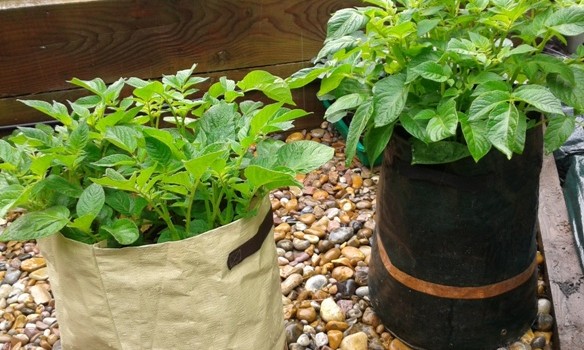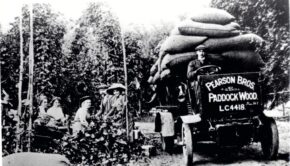Gardening
Making new plants by dividing perennials
Herbaceous perennials are those plants where the top growth dies off in the autumn leaving roots and the crown of the plant to survive the winter and throw up new stems the following spring. Many are easily divided to provide extra plants and rejuvenate an old clump where flowering is poor and spring is a good time as the soil warms up and light levels increase.
With division, like cuttings, the new plants are identical to the original and you do not get the variability of propagating by seed. Some modern cultivars and many with double flowers do not set seed easily and so division is the easiest option if you want to increase your plant stock or share plants with gardening friends and neighbours. How you go about dividing a plant depends on the root structure but always involves digging the plant up first, so get ready with a bucket and some fresh compost to protect the cut sections from drying out until you plant them up when the operation is complete.
– Plants like hardy Geraniums or Heuchera where stems or rhizomes run underground are simply cut with clean secateurs or a sharp knife making sure that you have both root and shoot on each section.
– Plants with a mass of small roots like Daylillies are split by pushing two garden forks into the clump back to back and levering them apart.
– Plants that form large woody roots like Peonies require more violence and are sliced in half with your boot on a sharp spade – make sure that the clump is stable on the ground first to avoid a trip to A&E for you instead of the plant.
Whatever the method of division you need to have roots and shoots or large buds on each piece that you replant. Usually you get enough new vigorous plants from round the edge of the clump to retire the old central section and still have some spares to pass on to admiring friends or a charity plant stall.
Alison Marsden lives in Southborough and provides advice to gardeners as well as teaching for Kent Adult Education Services.
There is no long term commitment – just all the advice you need an hour at a time.
Find out more at www.gardeningbydesign.co.uk or call 0780 304 5327
Potatoes in Bags
You can produce a few meals of freshly dug new potatoes on a patio or strong balcony using old compost sacks with drainage holes added or better still purpose made Veg Bags.
Buy a named variety of seed potatoes from a reputable source to avoid virus infection. Place the potatoes in a cool, light place for the ‘eyes’ to develop into shoots (chitting): a cardboard egg box is ideal to keep the potatoes apart. Once shoots are 1cm long plant the potatoes on a 15cm layer of multipurpose compost in the bottom of the bag and cover them well covered with more. Add layers of compost as the stems grow to mimic the earthing up process – this keeps the new tubers well covered and stops them turning green (and inedible). Early potatoes are ready to harvest when the flowers are fully open, usually July. Tubers form when the plant makes more food than it needs so keep them watered regularly and use fresh potting compost each year.
To harvest simply tip out the whole bag, lift out the tubers, wash, cook and enjoy immediately.






Comments